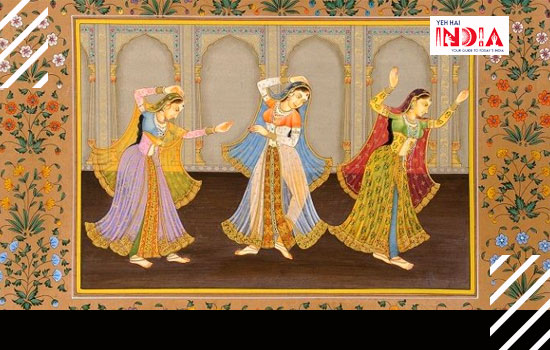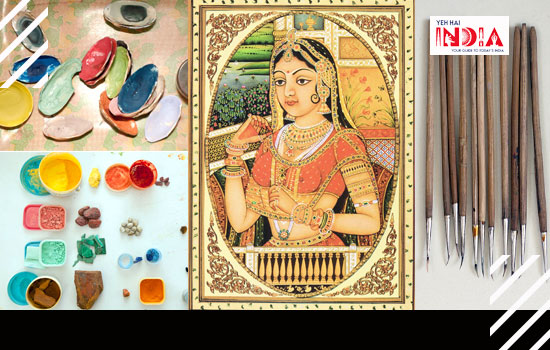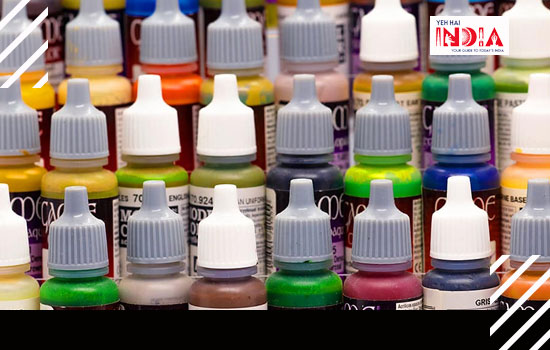Miniatures are quite the rage amongst people especially if they happen to be intricately designed minutely detailed miniatures.
Beyond the realm of our interest in miniature, the art of miniature painting is an ancient art dating back to the 16th century.
Closer home we have our famed Mughal artists depicting the tales of their time in Mughal miniature paintings.
Over the years miniature paintings have gone through a sea change from the techniques involved to the materials used; everything has changed.
The modern-day miniature paintings are 19th-century influences and bear little resemblance to the “minimum” or red lead portrait paintings.
Recommended Story – Phad Paintings of Shahpura
So let’s take a look at what’s it all about?
History of Miniature Paintings

Miniature paintings got their name from the medieval technique used by illustrators and painters of the 16th and 17th century who made fine portrait paintings with “Minimum” or red lead.
The technique uses a mixture of illuminated paintings and medals to curve out an intricately detailed portrait on materials like vellum, ivory, copper, and limning.
Painting materials like watercolor and gouache were widely used in miniature paintings.
It all started with portraits done in a box frame format but gradually developed beyond the portraits and used other frames such as oval frames.
The first miniature paintings originated in France and then spread to England and the rest of the world in the 16th century.
Origin of Miniature Paintings in India

Contrary to the European school of miniature painting, the Indian or eastern school started its journey early with miniature paintings made on palm leaves.
It depicted Buddhist deities and folk tales in the early 9th -12th century when the Pala dynasty ruled.
The Brahadeshwar temple of Tanjore is the source of the earliest miniature paintings in India.
That’s where the Tanjore miniature paintings originated from.
Later during the Mughal era, with artists like Mir Sayyid Ali getting the patronage of the Mughal court, miniature paintings started flourishing in India.
In the Mughal period, under the patronage of Akbar the tradition of depicting folk tales, mythology, even normal day-to-day things gained prominence in Mughal paintings.
So, you will find miniature paintings of the Mughal emperor Jahangir in an oval portrait frame format as well as Lord Krishna – Gopi Rasleela depicted in miniatures.
Unlike the European school, the Indian school of miniature paintings use bold colours and often use silver, gold or copper shiny elements to regular colourful features.
During the Mughal period, the Indian school of miniature painting was heavily influenced by the Persian style of art but gradually they came out of the influence.
By the beginning of the British period, miniature artists had already started to be influenced by Western styles of the Renaissance era.
Recommended Story – How To Make The Majestic Tanjore Painting
Elements of Miniature Paintings
Now that we know the history of the art, let’s take a look at how miniature paintings were made back in time:
Materials Used

Staying true to the tradition and the nature of work, miniature paintings are created on wooden tablets, linen or silk clothes, marbles, leather, ivory panels, and paper.
Colours
Generally vibrant colours taken from minerals, soil, flowers, vegetables, precious stones, gold, and silver add strong elements to miniature paintings.
Key Features
The primary artistic technique here is to showcase the story in colorful patterns, strong strokes and lines.
The bold colors coupled with various intricate patterns create a harmonious tale on paper or any other material.
Miniature Painting Making Today

Nowadays, miniature paintings are done by gouache or poster colours or oil colours instead of natural colours.
It is mainly about replicating famous artworks in a more affordable format.
Today one just needs some watercolor or gouache colors or oil colors along with some fine brushes of size 1, 0, 00, 000 and watercolor paper.
Added to this you need a ruler, compass, grade pencil, eraser, tissue paper, cotton buds to make miniature paintings.
The principal strategy here is to ensure that the surface is smooth and brushes are strong and fine.
Starting with a basic pattern in mind and thinking of the overall design well ahead of the painting is the key. This helps in the process.
As miniature paintings had their roots in illuminated paintings, the idea of cutouts from books was widely used.
So, artists frequently use cut out features to elevate their paintings.
The basic technique here is to do the painting intricately in smaller strokes of fine stippled and hatches.
Mastering any of these two helps in creating miniature paintings.
Few think doing miniatures from a distance.
A few feet with hard brush strokes are good for this kind of painting while others indulge in very soft strokes as they create very minute objects.
Irrespective of the strategy, modern-day miniature paintings are small and medium-sized paintings made in bright colours, especially gold and silver elements.
Most of them have beautiful traditional designs and patterns along with the main object or story of interest.
So, there you go, all you need to know about the art of miniature painting.
Now, invest some money and buy a traditional miniature painting, and get yourself motivated for an artistic life.
The art connoisseur’s life awaits you!
Also Read – Thangka Painting from Ladakh – The meditational Buddhist Artform










